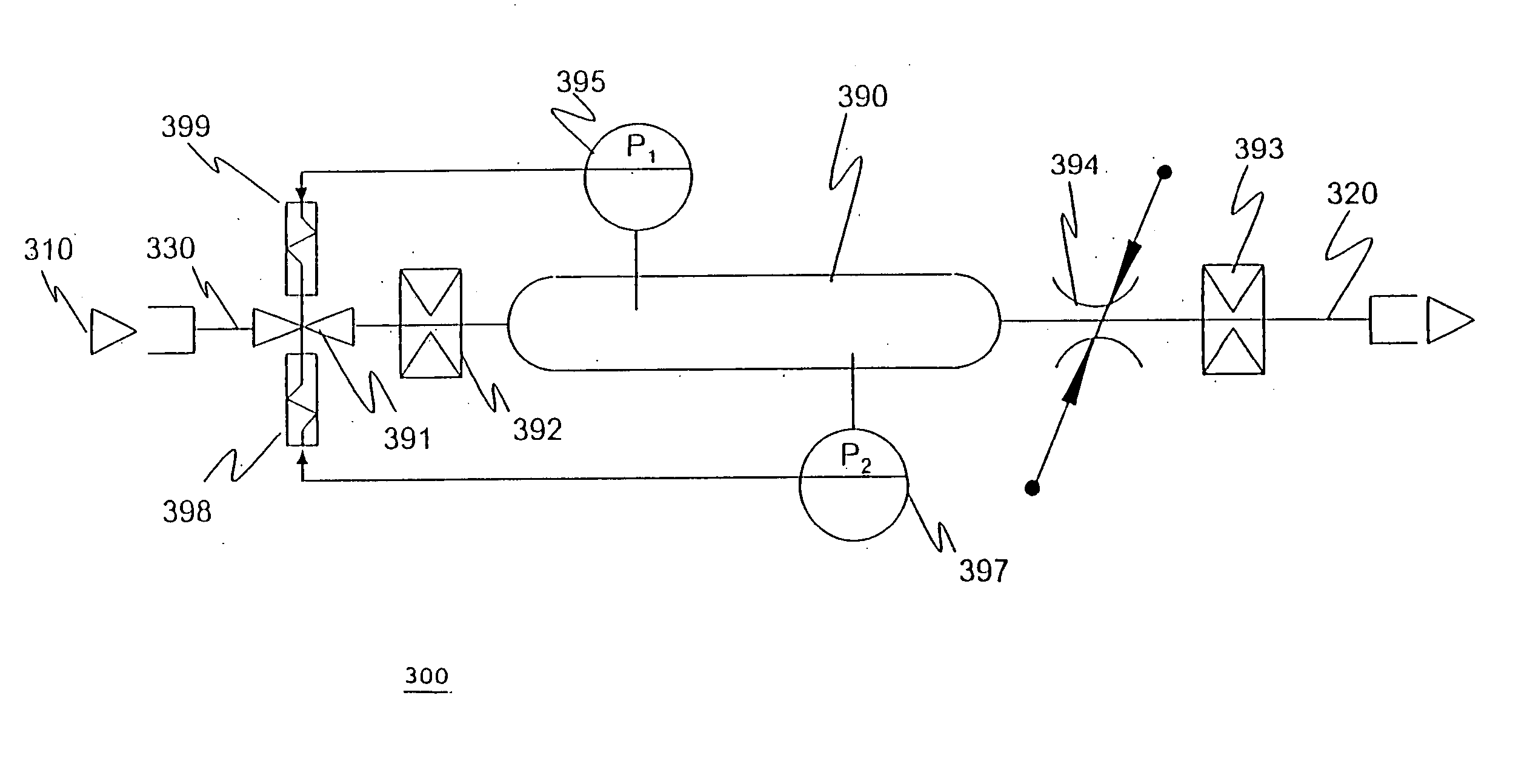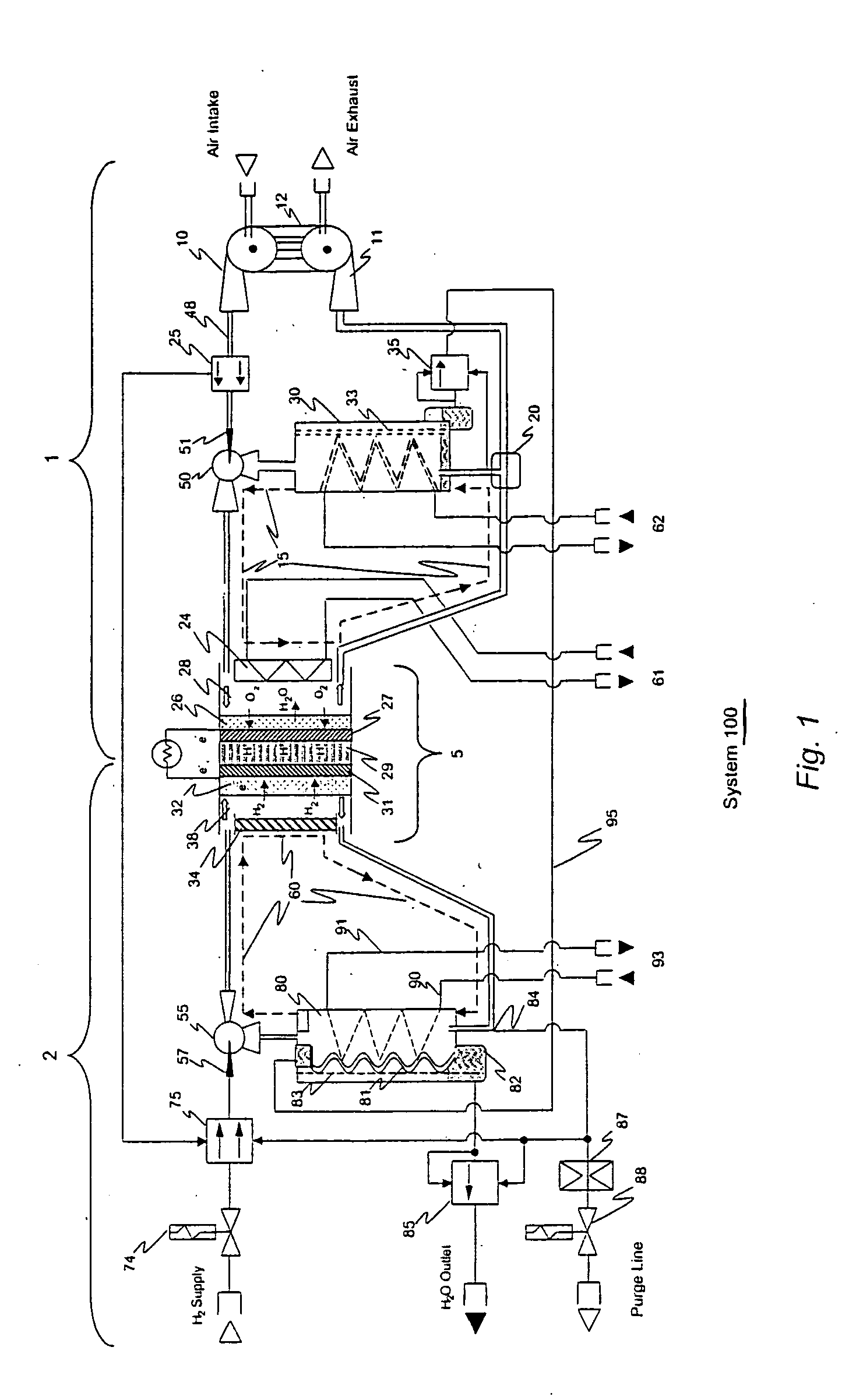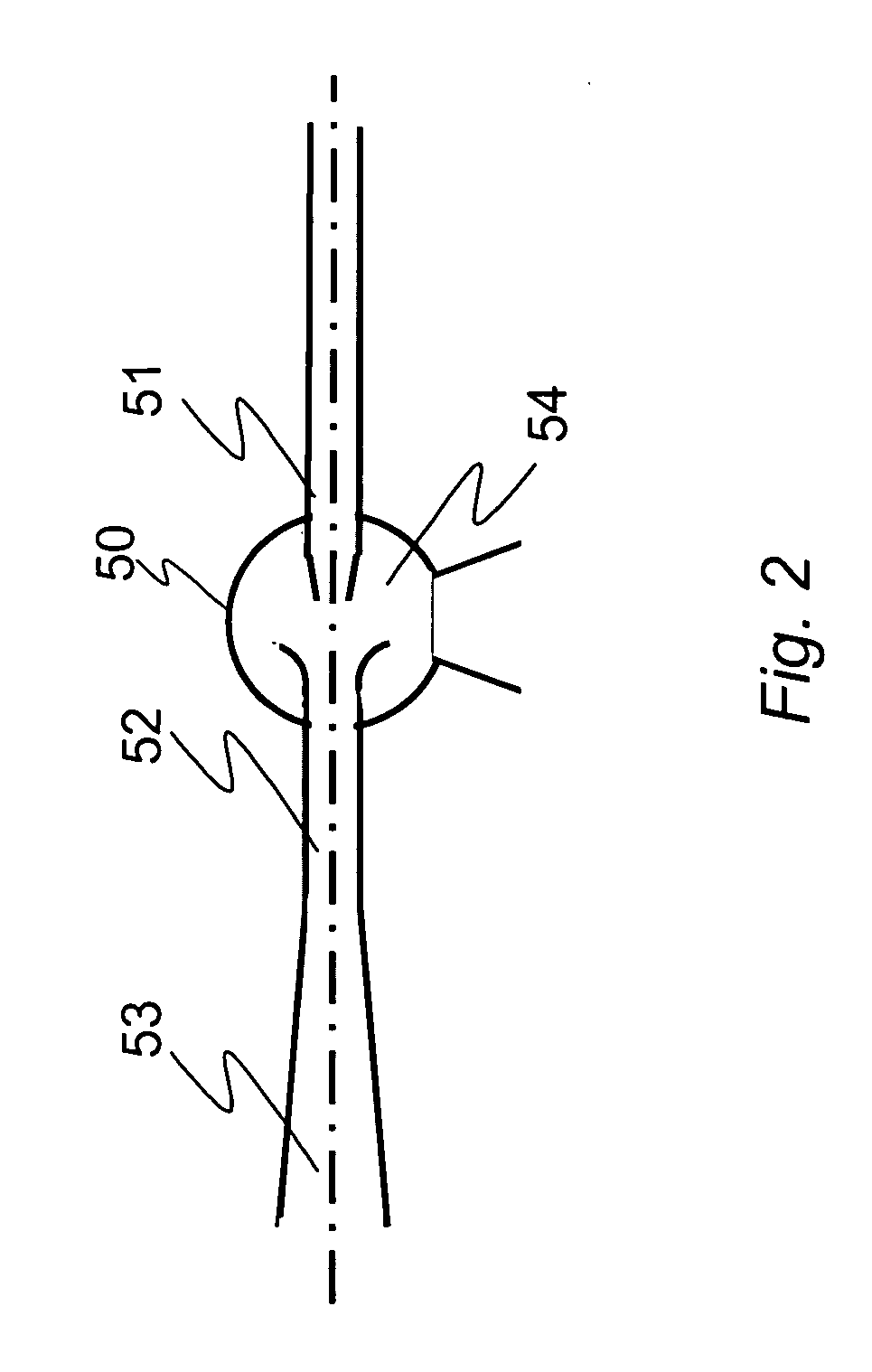Fuel cell with integrated feedback control
a fuel cell and feedback technology, applied in the field of fuel cell assemblies, can solve the problems of difficult to maintain the optimum electrolyte concentration under wide ranging current loads, wide variation in load demand encountered in most commercial applications, and limited water redistribution ability of membranes
- Summary
- Abstract
- Description
- Claims
- Application Information
AI Technical Summary
Benefits of technology
Problems solved by technology
Method used
Image
Examples
Embodiment Construction
[0037] The invention is an electrochemical generator based on fuel cells, such as hydrogen-air fuel cells with solid polymer proton exchange membranes (PEM) that can be used in mobile or stationary applications. Generators based on the invention provide higher reliability and higher efficiency as compared to conventional fuel cells, particularly under rapid and widely varying power demands, such as those encountered for typical automotive applications.
[0038] A recirculating reagent fuel-cell includes an ion-exchange membrane interposed between an anode and cathode anode to form a membrane / electrode assembly (MEA), the MEA interposed between a fuel gas diffusion layer and an oxidant gas diffusion layer. An oxidant and fuel flow network are provided having an input portion for supplying reagent and an output portion for removing excess reagent and reaction byproducts after electrochemical reaction. At least one of the oxidant flow network and fuel flow network includes a feedback con...
PUM
| Property | Measurement | Unit |
|---|---|---|
| surface area | aaaaa | aaaaa |
| voltage | aaaaa | aaaaa |
| surface area | aaaaa | aaaaa |
Abstract
Description
Claims
Application Information
 Login to View More
Login to View More - R&D
- Intellectual Property
- Life Sciences
- Materials
- Tech Scout
- Unparalleled Data Quality
- Higher Quality Content
- 60% Fewer Hallucinations
Browse by: Latest US Patents, China's latest patents, Technical Efficacy Thesaurus, Application Domain, Technology Topic, Popular Technical Reports.
© 2025 PatSnap. All rights reserved.Legal|Privacy policy|Modern Slavery Act Transparency Statement|Sitemap|About US| Contact US: help@patsnap.com



